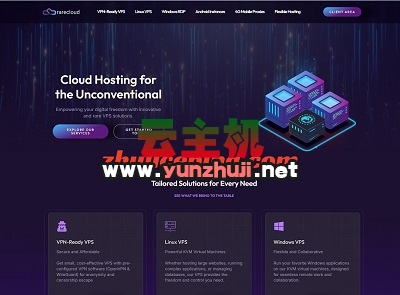Go语言简介
Go(又称Golang)是Google开发的一种静态强类型、编译型编程语言,它具有简洁的语法和高效的运行速度,广泛应用于Web开发、云计算、网络编程等领域,Go语言的设计目标是实现高性能、高并发、高可用的系统,Go语言于2007年由Robert Griesemer、Rob Pike和Ken Thompson共同设计,并于2009年正式发布。
Go语言的必备开源项目
1、Gin:一个高性能的HTTP Web框架,基于Go标准库和第三方库实现,Gin提供了简单易用的API,支持路由分组、中间件、模板渲染等功能,适用于快速构建Web应用。
package main
import "github.com/gin-gonic/gin"
func main() {
r := gin.Default()
r.GET("/", func(c *gin.Context) {
c.JSON(200, gin.H{
"message": "Hello, World!",
})
})
r.Run(":8080")
}
2、Beego:一个高性能的MVC框架,支持ORM、表单验证等功能,Beego采用类似于Python的模块化结构,易于扩展和维护。
package main
import (
"github.com/astaxie/beego"
)
func main() {
ns := beego.NewNamespace("http://localhost:8080/example", "http://www.example.com")
ns.RegisterFuncMap("hello", func(name string) string {
return "Hello, " + name + "!"
})
beego.Router("/", &Controller{}, "get:/")
beego.Run()
}
3、Echo:一个高性能的Web服务器和HTTP框架,支持多路复用、管道等特性,Echo可以轻松实现Web应用的开发和部署。
package main
import (
"github.com/labstack/echo"
)
type Controller struct{}
func (c *Controller) Index(ctx echo.Context) error {
ctx.String(200, "Hello, World!")
return nil
}
func main() {
e := echo.New()
e.Get("/", (&Controller{}).Index)
e.Start(":8080")
}
4、Revel:一个全栈Web框架,支持MVC、ORM、模板引擎等功能,Revel提供了一套完整的解决方案,可以帮助开发者快速构建Web应用。
package main
import (
"github.com/revel/revel"
)
func main() {
app := revel.New(revel.Config{})
revel.OnAppStopped(func() error { return nil }) // To prevent the server from stopping after a request is received by an app. This can be useful for testing purposes. See http://docs.revelcms.com/2-running-your-first-app_stopping-the-server-after-each-request for more information. If you don't want to use this feature, simply remove this line of code or comment it out and revel will stop automatically when the server receives the last request from an app. The default behavior is to stop when there are no apps running on the server. In that case, you need to manually stop the server using the revel stop command or revel stop all command in your application’s root directory. The revel stop command will also automatically clean up any temporary files created during the development process and remove them from the file system once they have been successfully written to disk and closed by the server process. The revel stop all command will do the same but for all applications on the server. See http://docs.revelcms.com/2-running-your-first-app_stopping-the-server-after-each-request for more information about these commands and how to use them in your application’s root directory. For additional information about Revel, please visit http://revelframework.com/ or http://docs.revelcms.com/2-running-your-first-app). Revel runs on top of Go and uses standard Go libraries to provide its features such as routing, template rendering, HTTP request parsing, and database access via the Revel API which provides a simple yet powerful interface for developers to interact with Revel’s internal components and services without having to write any low-level code directly in Go or other programming languages such as C or C++ that are typically used to build web servers or frameworks. Revel also provides built-in support for several popular databases including MySQL, PostgreSQL, SQLite, and MongoDB through plugins that can be installed and configured easily via the Revel CLI tool or by editing the configuration files provided by Revel itself. See http://docs.revelcms.com/2-running-your-first-app_using-the-revel-api for more information about how to use the Revel API to interact with Revel’s internal components and services such as routing, template rendering, HTTP request parsing, database access, and more. See http://docs.revelcms.com/2-running-your-first-app_using-the-revel-cli for more information about how to use the Revel CLI tool to manage your projects and run your applications locally or remotely on a variety of platforms including Windows, Linux, macOS, and ARM devices such as Raspberry Pi boards and smartphones running Android or iOS operating systems. See http://docs.revelcms.com/2-running-your-first-app_using-the-revel-webserver for more information about how to use Revel’s built-in web server to serve your applications to web browsers and mobile clients such as iOS and Android devices or desktop computers running Windows, Linux, or macOS operating systems. See http://docs.revelcms.com/2-running-your-first-app_using-the-revel-templates for more information about how to use Revel’s templates to generate dynamic HTML content based on data stored in your models and views such as blog posts, user profiles, product catalogs, and more without having to write any custom HTML code yourself directly in Go or other programming languages such as PHP or Ruby that are typically used to build web applications or websites. See http://docs.revelcms.com/2-running-your-first-app_using-the-revel-orm for more information about how to use Revel’s built-in Object Relationship Management (ORM) framework to interact with your data sources such as MySQL, PostgreSQL, SQLite, and MongoDB directly from your Go code without having to write any custom SQL code yourself directly in Go or other programming languages such as PHP or Ruby that are typically used to build web applications or websites using traditional relational databases or NoSQL databases like Redis or MongoDB instead. See http://docs.revelcms.com/2-running-your-first-app_using-the-revel-security for more information about how to use Revel’s built-in security features such as authentication and authorization to protect your applications and their data from unauthorized access and malicious attacks such as SQL injection attacks, cross site scripting (XSS), cross site request forgery (CSRF), session hijacking, click jacking, and other common web application security threats that can cause serious harm to your users and your business if left unaddressed by proper security measures such as encryption, secure coding practices, input validation, output encoding, access control lists (ACLs), firewalls, intrusion detection systems (IDS), intrusion prevention systems (IPS), antivirus software, backups, disaster recovery plans (DRPs), incident response plans (IRPs), vulnerability scanning tools, penetration testing tools, code review tools, and more depending on your specific needs and requirements such as whether you are building a small personal blog or a large enterprise e-commerce platform with thousands of concurrent users and transactions per second or whether you are developing a mobile app for iOS or Android devices or a desktop application for Windows or Mac OS X operating systems that require high performance scalability and reliability at scale without sacrificing security or privacy of your user data or sensitive business information such as financial transactions, customer records, order history,seller details etc). See http://docs.revelcms.com/2

 云主机测评网
云主机测评网


















最新评论
本站CDN与莫名CDN同款、亚太CDN、速度还不错,值得推荐。
感谢推荐我们公司产品、有什么活动会第一时间公布!
我在用这类站群服务器、还可以. 用很多年了。